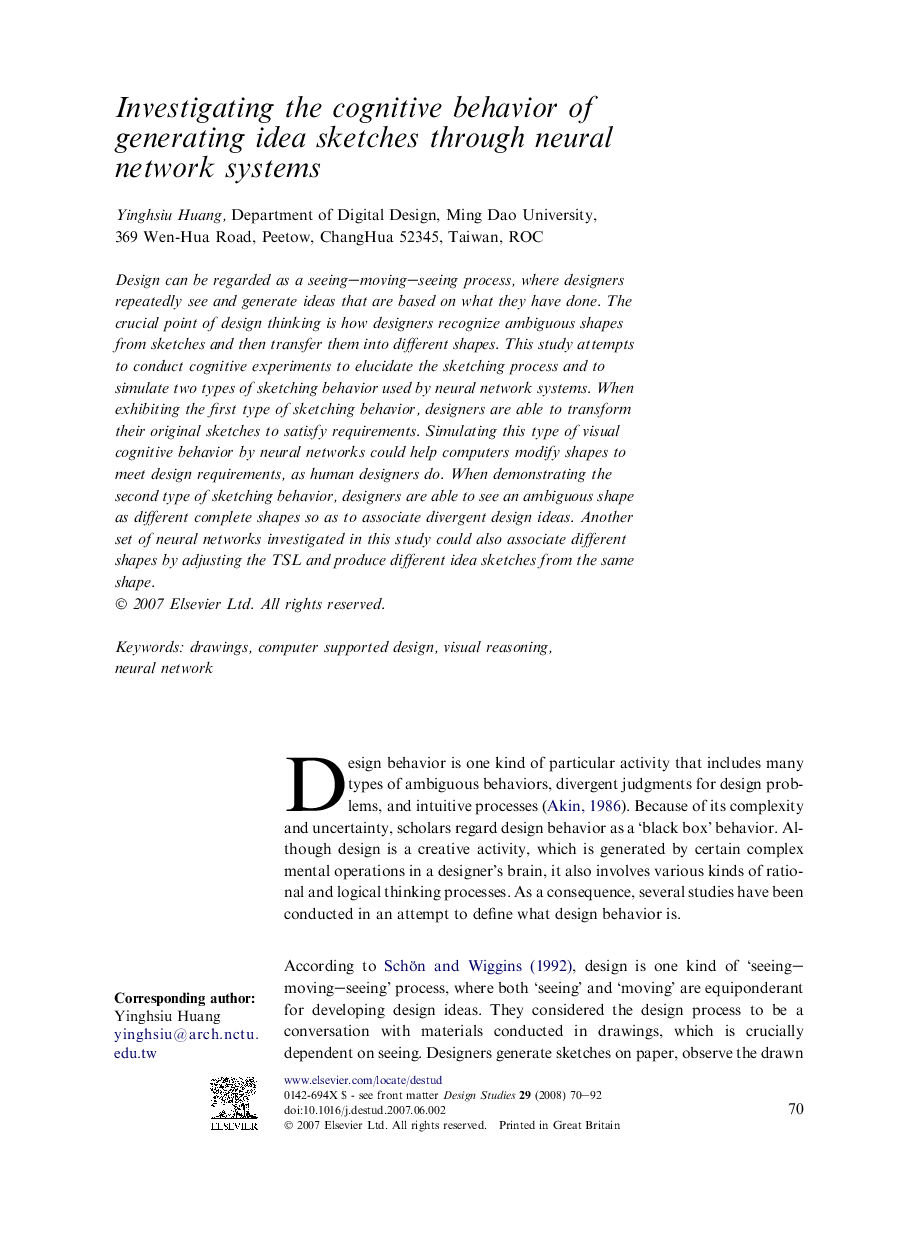| Article ID | Journal | Published Year | Pages | File Type |
|---|---|---|---|---|
| 261797 | Design Studies | 2008 | 23 Pages |
Design can be regarded as a seeing–moving–seeing process, where designers repeatedly see and generate ideas that are based on what they have done. The crucial point of design thinking is how designers recognize ambiguous shapes from sketches and then transfer them into different shapes. This study attempts to conduct cognitive experiments to elucidate the sketching process and to simulate two types of sketching behavior used by neural network systems. When exhibiting the first type of sketching behavior, designers are able to transform their original sketches to satisfy requirements. Simulating this type of visual cognitive behavior by neural networks could help computers modify shapes to meet design requirements, as human designers do. When demonstrating the second type of sketching behavior, designers are able to see an ambiguous shape as different complete shapes so as to associate divergent design ideas. Another set of neural networks investigated in this study could also associate different shapes by adjusting the TSL and produce different idea sketches from the same shape.
